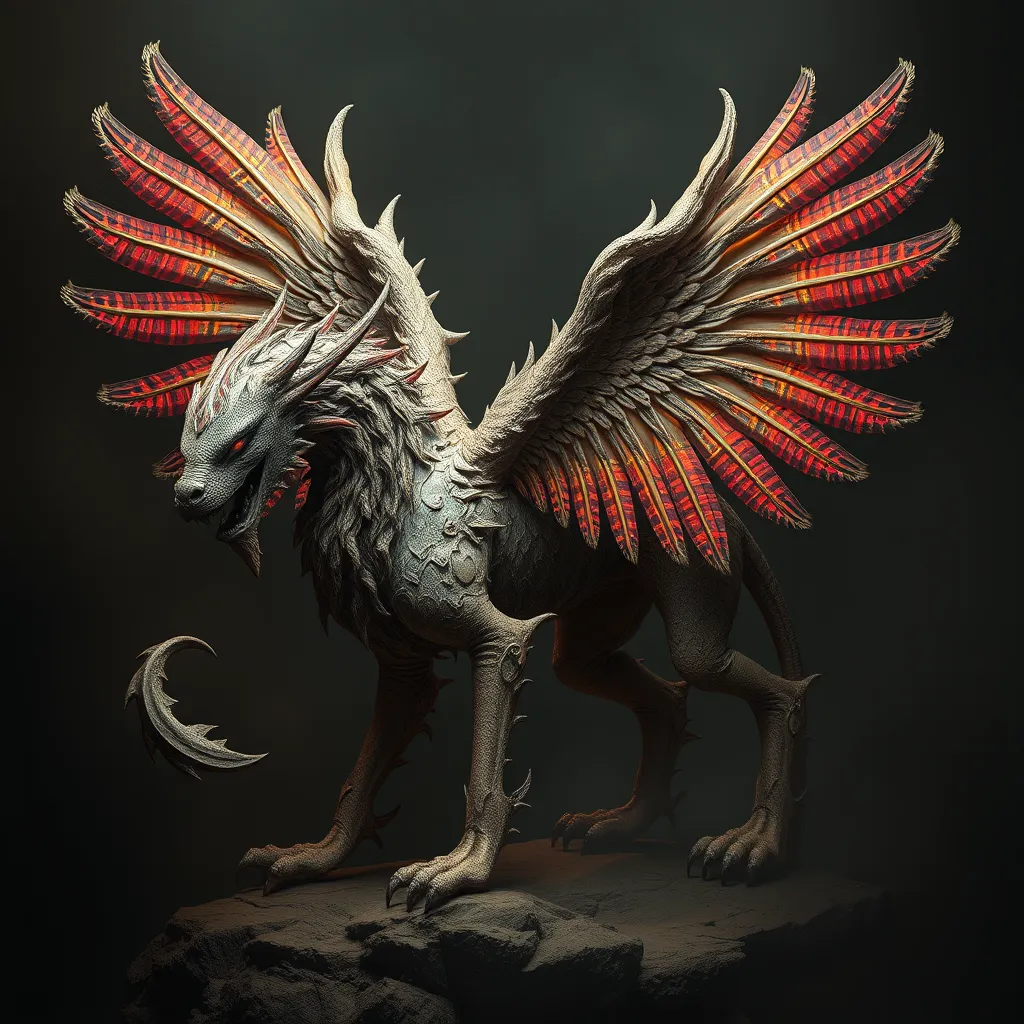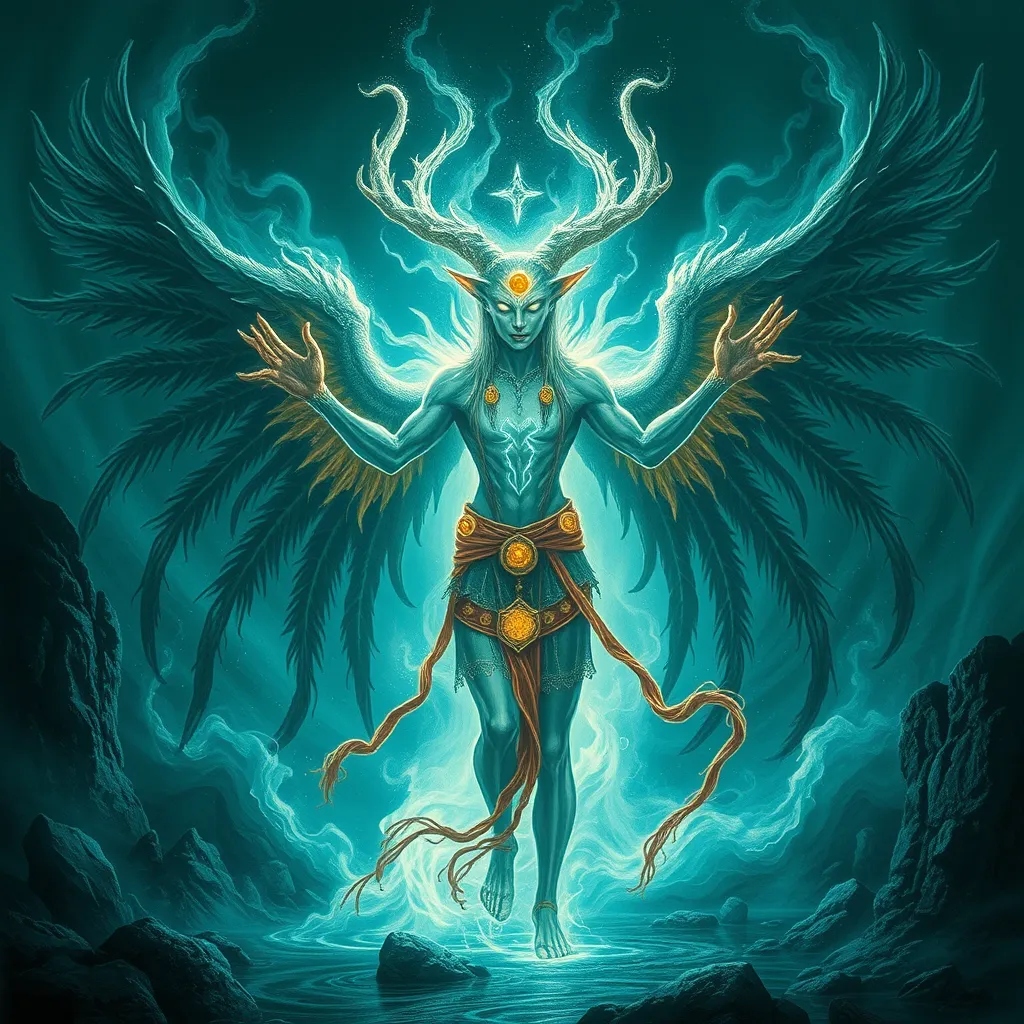The Chimera in African Mythology: Exploring the Diverse Forms of Mythical Beings
I. Introduction
The concept of the Chimera originates from ancient mythology, representing a creature composed of various animal parts, often depicted as a lion, goat, and serpent. This hybrid being symbolizes the blending of different entities, embodying both the fearsome and the wondrous aspects of nature.
African mythology is rich and varied, encompassing a myriad of beliefs, stories, and practices that reflect the diverse cultures of the continent. Its significance lies in its ability to convey moral lessons, cultural values, and the complexities of human existence through the use of mythical beings.
This article aims to explore the concept of the Chimera and its various manifestations in African cultures, revealing the unique interpretations and significance that these hybrid creatures hold within different regional contexts.
II. The Concept of the Chimera
A. Origin of the term “Chimera” in mythology
The term “Chimera” originates from Greek mythology, where it was described as a fire-breathing monster that was part lion, part goat, and part serpent. This creature was often symbolized as a representation of chaos and the unpredictable nature of life.
B. General characteristics of Chimera-like beings across various cultures
Chimera-like beings share several common characteristics across various cultures:
- Hybrid forms that combine features from different animals.
- Symbolic representations of duality, chaos, or balance.
- Roles in storytelling that often convey moral or cautionary tales.
C. The importance of hybrid creatures in mythological narratives
Hybrid creatures like the Chimera are significant in mythology as they often embody the complexities of existence. They challenge the boundaries of nature, representing the intermingling of different elements, and serve as metaphors for transformation and adaptation within cultural narratives.
III. Regional Variations of Chimera-like Beings in Africa
A. West African Chimeras
1. Description and characteristics
In West Africa, chimeric beings often take the form of creatures like the Adze, a vampire-like being that can transform from a firefly into a human. This transformation symbolizes the duality of existence and the coexistence of light and darkness.
2. Cultural significance and stories
The Adze is not only a fearsome creature but also a representation of the duality of human nature, illustrating themes of morality and the consequences of one’s actions.
B. East African Chimeras
1. Description and characteristics
In East Africa, the Jengu is a water spirit that is often depicted as half-human and half-fish. This being is revered for its healing abilities and serves as a guardian of water bodies.
2. Cultural significance and stories
The stories of the Jengu emphasize the importance of water in life and the balance between humanity and nature. It represents both the nurturing and destructive aspects of water.
C. Southern African Chimeras
1. Description and characteristics
In Southern Africa, the Tokoloshe is a mischievous creature that can take on various forms, including that of a small human or animal. It is often associated with trickery and malevolence.
2. Cultural significance and stories
The Tokoloshe serves as a cautionary figure in folklore, warning against disobedience and the consequences of one’s actions. Its stories are used to teach children moral lessons and the importance of respecting cultural norms.
IV. Symbolism and Meaning of Chimeras in African Cultures
A. Representation of duality and balance
Chimeras in African cultures often symbolize the balance between opposing forces, such as good and evil, life and death, and the seen and unseen worlds. They serve as reminders of the complexities of existence and the necessity of harmony.
B. Chimeras as symbols of transformation and adaptability
These hybrid beings embody the idea of transformation, illustrating the ability to adapt to different circumstances. They reflect the fluidity of identity and the potential for change within the human experience.
C. Role in conveying moral lessons and cultural values
Chimeras often play a crucial role in storytelling, serving as vehicles for conveying moral lessons and cultural values. Their narratives encourage introspection and reflection on human behavior and societal norms.
V. The Chimera in African Folklore and Oral Traditions
A. Popular stories featuring Chimera-like beings
Many African folktales feature Chimera-like beings that illustrate important cultural values. For instance, stories about the Adze and the Jengu often highlight themes of respect for nature and the consequences of one’s choices.
B. The role of storytelling in preserving cultural heritage
Storytelling is a vital aspect of African cultures, preserving knowledge and traditions through generations. The tales of chimeric beings ensure that cultural heritage is maintained and adapted over time.
C. Comparison with other mythological traditions
Similar to other mythological traditions worldwide, the presence of hybrid creatures in African mythology reflects universal themes of duality, transformation, and the moral complexities of life, drawing parallels with the Chimeras of Western mythology.
VI. Artistic Representations of Chimeras in African Art
A. Depictions in traditional art forms
Chimeric beings are often depicted in various traditional art forms, including sculpture, textiles, and pottery. These artistic representations capture the essence of these creatures and their significance within cultural narratives.
B. Influence on contemporary African artists
Contemporary African artists continue to draw inspiration from mythical beings, incorporating themes of Chimeras into modern art. This fusion of traditional and contemporary styles helps to keep the legacy of these creatures alive.
C. The importance of visual representations in understanding mythology
Visual art serves as a powerful medium for understanding and interpreting mythology. The depiction of chimeric beings helps to encapsulate their stories and significance, making them accessible to a wider audience.
VII. The Impact of Globalization on the Perception of Chimeras
A. How Western interpretations have influenced African myth
Globalization has led to the exchange of ideas and narratives, resulting in Western interpretations of African myths. These adaptations can sometimes overshadow indigenous understandings, leading to a homogenization of cultural narratives.
B. The fusion of traditional beliefs with modern narratives
As cultures interact, traditional beliefs often merge with modern narratives, creating new interpretations of chimeric beings. This fusion can enrich cultural expressions while presenting challenges in preserving original meanings.
C. The preservation of indigenous knowledge amidst globalization
Despite the influences of globalization, many communities strive to preserve indigenous knowledge and practices. Efforts to document and promote traditional stories help to maintain the cultural significance of chimeras in African mythology.
VIII. Conclusion
In summary, the Chimera and its variations in African mythology represent a fascinating blend of cultural narratives, emphasizing themes of duality, transformation, and moral lessons. The enduring legacy of these hybrid creatures highlights the richness of African mythological traditions and their importance in understanding human existence.
As we explore and appreciate these diverse mythological beings, we encourage a deeper engagement with and respect for the cultural heritage they embody, ensuring that these stories continue to resonate for generations to come.



